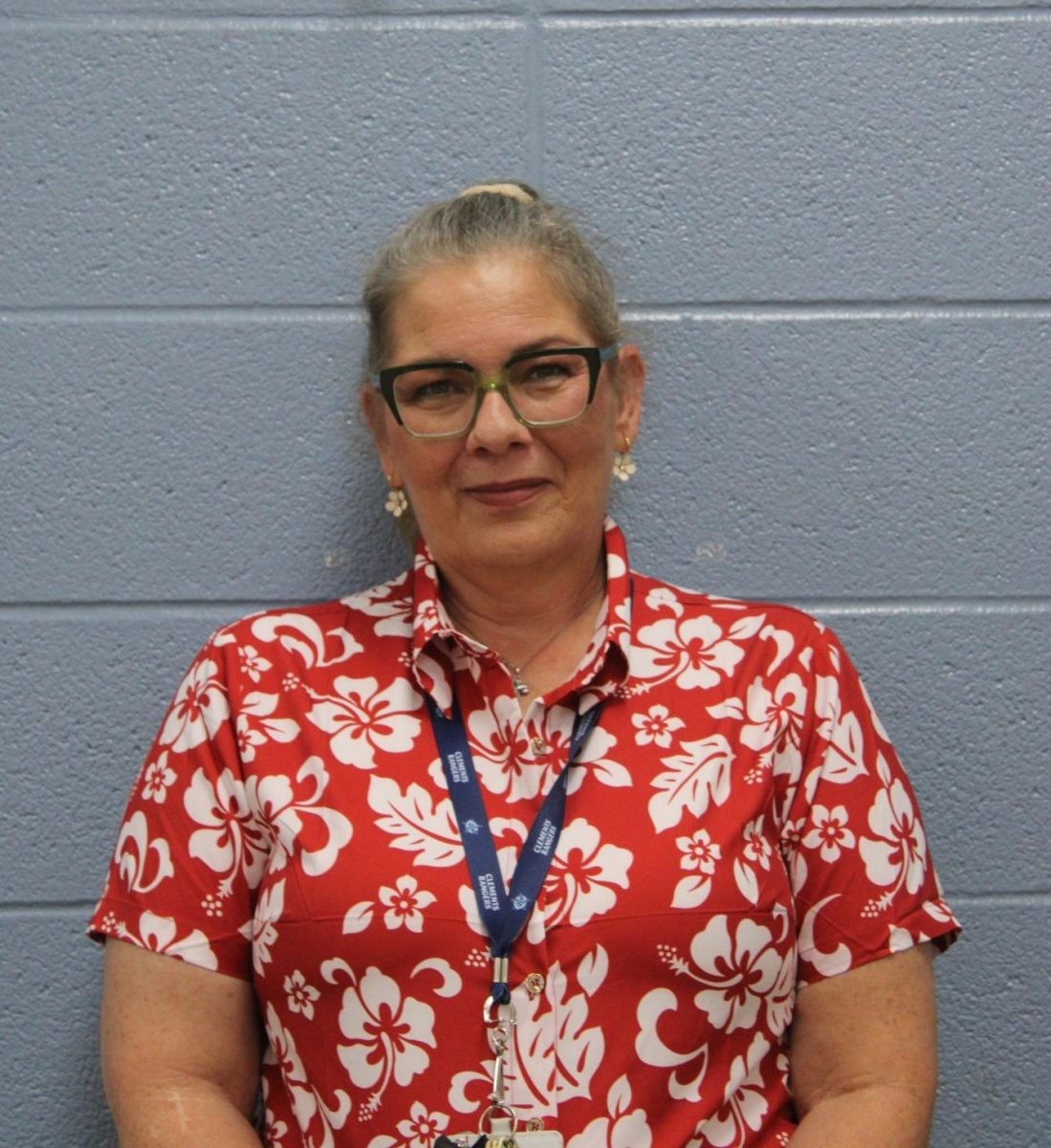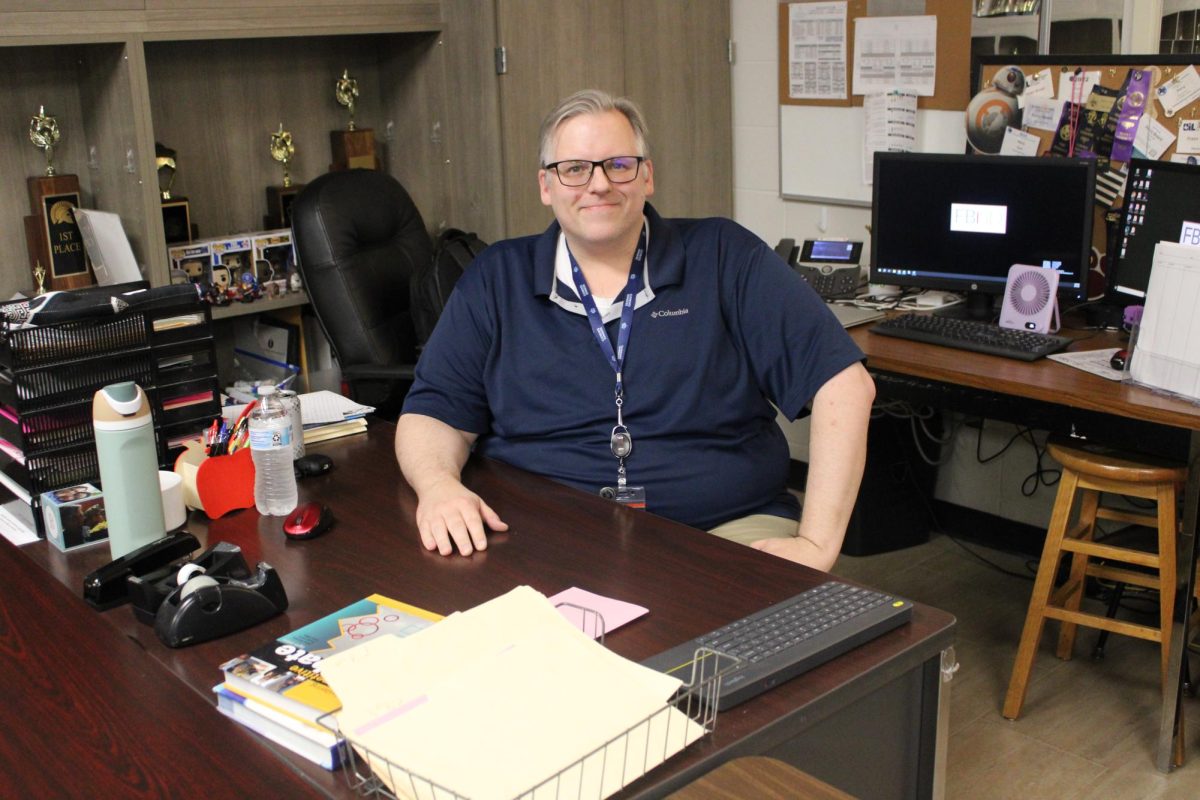

The predawn darkness is silent and soothing.
Quiet is a blanket that sits heavy in the air, wrapping around Mischelle McLean’s shoulders, unbroken even by the aroma of coffee and the dim murmur of the news program on the television.
At just 4 in the morning, McLean’s day has already begun. As the cafeteria manager, McLean clocks in before everyone else, around 6:15 every day except Monday, when she arrives at 5:30 to bring the groceries in.
“I like to be here by myself before the ladies get here,” McLean said. “I can get my thoughts for the day and get what all I have to do for the day before they come because then it’s a lot of questions and stuff like that. At least I have that quiet time.”
Students begin trickling into the Commons after the school doors open at 6:50. Those who haven’t eaten yet make their way to the breakfast line, picking up warm cinnamon rolls and yogurt cups, then paying for their food at the cash register.
“My favorite is seeing [students’] faces every morning,” McLean said. “It’s very satisfactory when a child comes in and we can make [your day] saying ‘good morning’.”

Whether being handed a hot breakfast with a smile or greeted by name, these moments are part of the “intentional positive interactions” that Principal Tara Baker set as a culture focus at the start of the school year.
“There are so many opportunities for them to have a positive influence,” Baker said. “If you were to go through a cafeteria line every single day and someone was somewhat negative or it was a “grab your tray”…that is going to affect you as a student. On the flip side, if every day you’re going through that line and you see a smile and you could count on that one person to say “hello, how’s your day” that could also positively impact you.”
So far, Baker said that the cafeteria workers are “rocking” it.

After breakfast, lunch preparations begin.
In the back kitchen, hamburger buns are laid out on metal sheet pans, row after neat row.
Plastic boxes are filled with chopped lettuce and tomatoes for the chicken fajita salads.
Applesauce cups are stacked in tidy towers, perfectly positioned for easy access.
The simplicity of the final product that makes its way to a lunch tray is deceiving — the work of feeding over 1,000 kids every day is a precise art.
“There are guidelines that we have to go by with the FDA and as far as serving sizes, as far as meal components that you guys have to have, you just can’t come in and just pick up what you want,” McLean said. “We have a meal pattern that we have to go by and we have a set menu that we have to go by because you guys have to have certain amount of meats, certain amount of breads for the week, and fruits and vegetables…It’s not just coming in, pulling out stuff, and fixing whatever we want to do.”

Child nutrition is a crucial task – as McLean says, “a hungry child can’t learn”. Still, the work of balancing milligrams of sodium and serving sizes, baking at 350°F or 450°F, goes largely unseen.
“Because we’re here feeding the kids, [people] think, education-wise, we don’t count,” McLean said. “That’s just the misconception that people have. They think we just come, we just pull product and we just cook.”
It is far from that simple in reality, especially when it comes to timing. Cafeteria workers coordinate every day with school administrators, making adjustments on days that have changes in the bell schedule.
“[The most challenging part is] if I’m short, to make sure that you guys get your meals on time and you all have enough time to sit and eat and socialize with your friends,” McLean said. “You know, the lines go fast so y’all can sit and eat and y’all have enough time.”
At 11:15, students flood the Commons for A-lunch. In minutes, long lines have formed, students moving one-by-one to get trays of hamburgers (buns now assembled around meat patties) or chicken fajita salad (lettuce and tomato now neatly sealed in plastic boxes), with applesauce on the side.
As students plunk their trays down, the room fills with chatter.
Mission accomplished.

In McLean’s almost three decades working for the district, her least favorite memory is the pandemic.
“COVID time was very challenging [because] we were out there handing out meals to the kids,” McLean said. “We did not have that face-to-face interaction with you guys. We would have to come in and everything was done, prepared in bags, so the parents would drive up and we’ll just hand them the product. That was that.”
Now that school has returned entirely to an in-person format, McLean also gets to chat with students, doling out advice here and there — ultimately, McLean says, she just wants them to be successful.
“When they come in, I will have a conversation with them, let them know going to college is the way to go, or go to a trade school and learn a trade,” McLean said. “Because I try to empower them to motivate them [to] go to class, listen. Because sometimes they be complaining about my teacher this or my teacher that, you know. You come to school to learn.”
The lunch rush ends as quickly as it begins, clusters of friend groups bidding goodbyes as they file out of the Commons and head to their next classes. McLean said that while students are for the most part “well-mannered”, she has had to learn patience in her time as manager.
“Because I’m dealing with young adults, which are you guys, so I have to learn patience, to be patient with you guys,” McLean said. “Because some of you can be very rowdy, but my patience, I just have to learn patience.”
McLean clocks out at 1:45. Tomorrow she’ll be back to do it all over again. At this point, she said she values just being alive and waking up every morning to a job she enjoys.
“I enjoy my job. I really, really do,” McLean said. “That’s my favorite time. It’s just to come here and do my job to the best of my ability, and I just love what I do. I really do. I really do love what I do.”











mischell a mclean • Oct 9, 2024 at 6:41 am
Thank you.